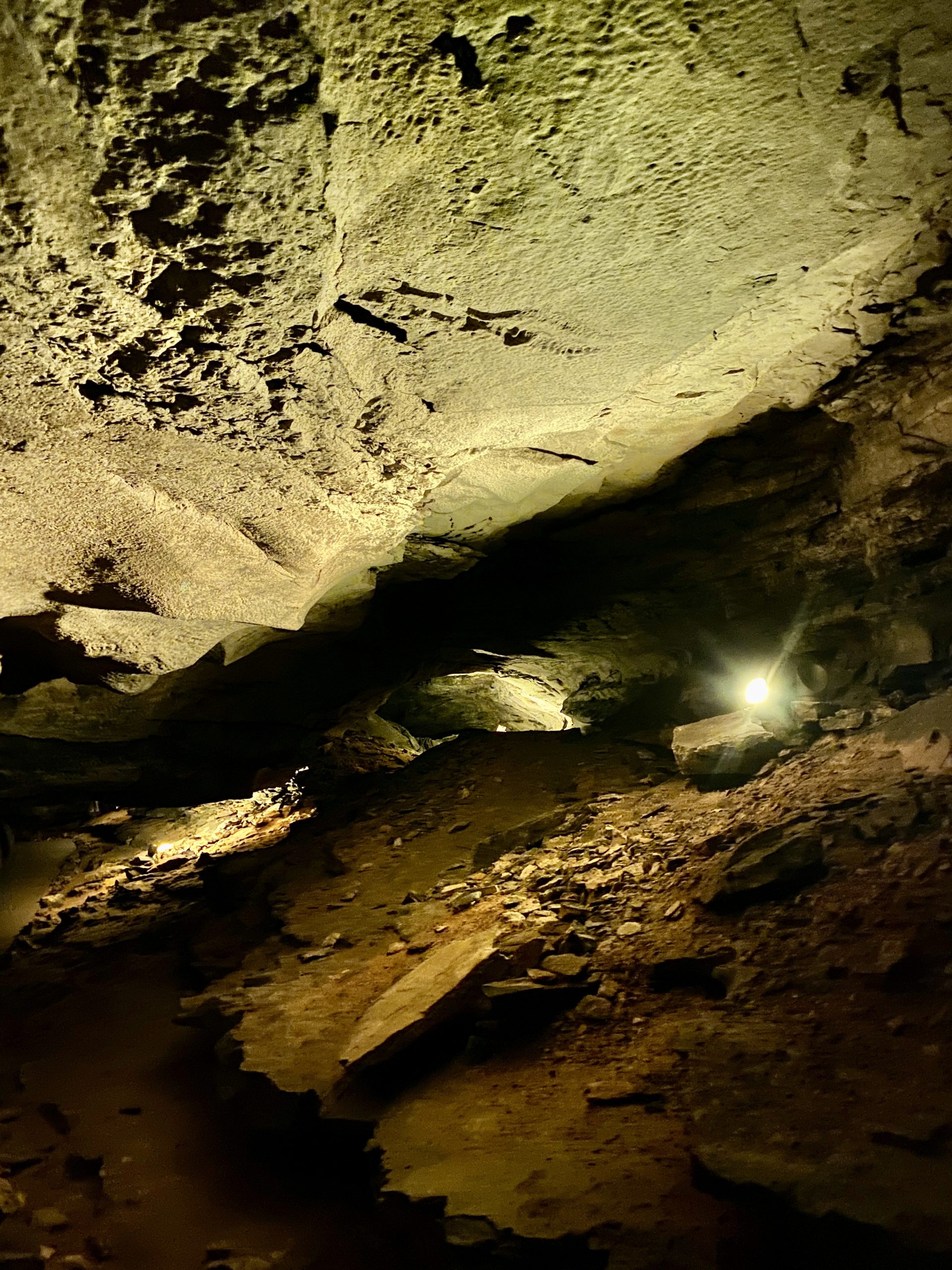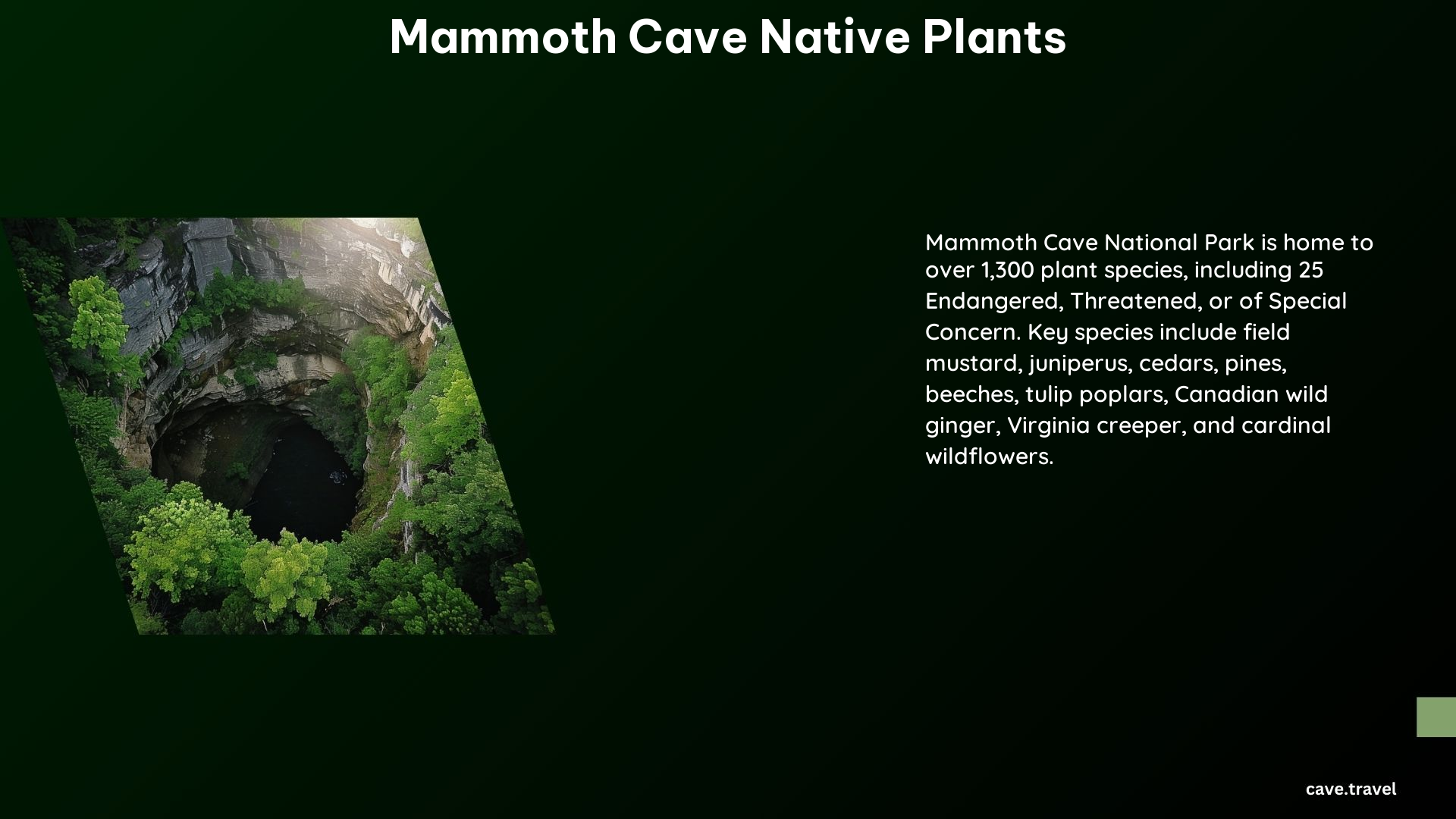Mammoth Cave National Park is a natural wonder that not only boasts an extensive cave system but also a rich and diverse array of native plant species. From towering trees to vibrant wildflowers, the park’s flora plays a crucial role in the delicate ecosystem. In this blog post, we’ll delve into the fascinating world of Mammoth Cave’s native plants, exploring their unique characteristics, ecological significance, and the conservation efforts that aim to protect them.
Majestic Trees of Mammoth Cave

Mammoth Cave National Park is home to a remarkable diversity of tree species, each adapted to the unique conditions found within the park’s boundaries. The park’s ridges are dotted with drought-hardy trees like cedars and pines, while the lush valleys harbor towering beeches and tulip poplars.
Dominant Tree Species
Some of the most abundant tree species found in Mammoth Cave National Park include:
- Eastern Red Cedar (Juniperus virginiana)
- Shortleaf Pine (Pinus echinata)
- American Beech (Fagus grandifolia)
- Tulip Poplar (Liriodendron tulipifera)
These trees not only contribute to the park’s scenic beauty but also play a vital role in the ecosystem, providing food and shelter for a wide range of wildlife.
Vibrant Wildflowers of Mammoth Cave

In addition to its impressive tree diversity, Mammoth Cave National Park is home to over 1,300 species of plants, including a stunning array of wildflowers. These delicate blooms add pops of color and beauty to the park’s landscape, while also serving as important food sources and habitat for pollinators and other wildlife.
Endangered and Threatened Species
Unfortunately, not all of Mammoth Cave’s native plants are thriving. The park is home to 25 species that are listed as Endangered, Threatened, or of Special Concern by the Kentucky State Nature Preserves Commission. These include plants like the Canadian wild ginger and Virginia creeper, which face various threats to their survival.
Aquatic Plants of Mammoth Cave
Mammoth Cave National Park’s diverse landscape includes numerous wet areas, such as the Green River, Nolin River, streams, and ponds. These aquatic habitats provide the perfect environment for a variety of hydrophilic (water-loving) plants.
Common Aquatic Species
Some of the most common aquatic plants found in Mammoth Cave National Park include:
- Cattails (Typha spp.)
- Water Lilies (Nymphaea spp.)
- Cardinal Flowers (Lobelia cardinalis)
These aquatic plants play a crucial role in the park’s ecosystem, providing food and cover for aquatic animals, removing carbon dioxide from the water, and replenishing oxygen, acting as natural filters to keep the water clean.
Other Plant Life
In addition to the trees, wildflowers, and aquatic plants, Mammoth Cave National Park is also home to a variety of other plant life, including mosses, liverworts, and lichens. These smaller plants add to the overall diversity and richness of the park’s flora.
Conservation Efforts
The National Park Service and its partners are committed to protecting and preserving the native plants of Mammoth Cave National Park. One such effort is the park’s participation in Bat Week, which aims to identify and remove invasive plant species that can harm bat habitats. Additionally, the park has participated in the National Parks Bioblitz, a citizen science initiative that helps to document the park’s plant and animal species.
Visiting Mammoth Cave National Park
Mammoth Cave National Park is open year-round, though the specific hours and attractions may vary depending on the season. Visitors can explore the park’s diverse plant life by hiking the numerous trails, attending ranger-led programs, and participating in citizen science initiatives.
To plan your visit, be sure to check the park’s website for the latest information on hours, fees, and available activities. Whether you’re a nature enthusiast, a wildflower lover, or simply someone who appreciates the beauty of the great outdoors, Mammoth Cave National Park is sure to leave a lasting impression.
References
- https://wildflowersearch.org/search?oldstate=gmc%3A37.188%2C-86.101%3Bgms%3A12%3Blocation%3AMammoth-Cave-National-Park%3Belev%3A753%3Btitle%3AMammoth-Cave-National-Park-Wildflowers%3B
- https://www.inaturalist.org/places/mammoth-cave–2
- https://www.nps.gov/maca/learn/nature/trees.htm
- https://www.nps.gov/maca/learn/nature/freshwaterplants.htm
- https://www.nps.gov/maca/learn/nature/plants.htm
